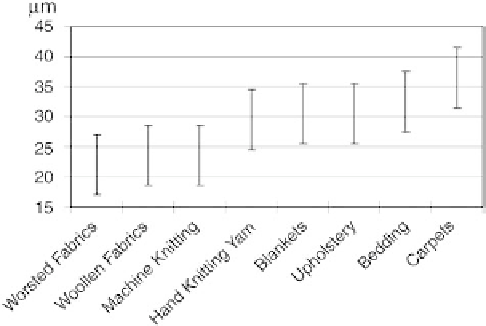Agriculture Reference
In-Depth Information
producers often fail to keep up with increased demand due to population growth. There
are many reasons, but the majority are classified as marketing problems. A study on the
constraints to adoption of improved technologies conducted in North West Province of
Cameroon showed some of the problems blocking greater production. A basic factor is
the size of individual farmer herds. Most farms are small, and the average herd size for
goats is nine and for sheep eight animals.
29
This herd size means the capital for
improvements is limited. Related to the herd size is the limited amount of available
pasture land. The current market prices are perceived as too low to merit increased
investment. The result is that farmers are making little additional investment to increase
herd productivity and animal numbers.
Wool products are an income source for most sheep farmers and some goat
farmers. Most wool from meat-type sheep is of ordinary quality and only yields a rela-
tively small income for the farmer. Specialized wool-producing breeds of sheep and
goats can give a good income if managed properly. Wool is used largely for clothing
because of its insulating properties and moisture absorbing qualities. Each application
requires a specific diameter, length of fiber, and quality as shown in Figure 7.25.
30
The key to marketing is the quality of the wool. Wool quality is determined by the
diameter of the individual fibers, their length, and amount of contamination by foreign
matter, such as dirt, burrs, and seeds. Within the United States three systems are cur-
rently in use.
The American system (sometimes called the blood system) was developed in the
1800s. It classifies wool according to the percentage of merino blood in the breed of
sheep providing the wool. Full-blood merino is classed as fine, then
1
2
3
8
blood,
blood,
1
4
1
4
blood, and so on. This only gives an approximate classification of
wool fineness and quality.
The spinning count system (or English system) is more exact. It is based on the
number of “hanks” (560 yards) of yarn that can be spun from a pound of clean wool.
Finer wool fibers will produce more hanks than coarse fibers.
blood, low
Figure
7.25.
Fiber diameter and end uses of wool. (Adapted from Harvesting of Textile Animal
Fibers, FAO.)












